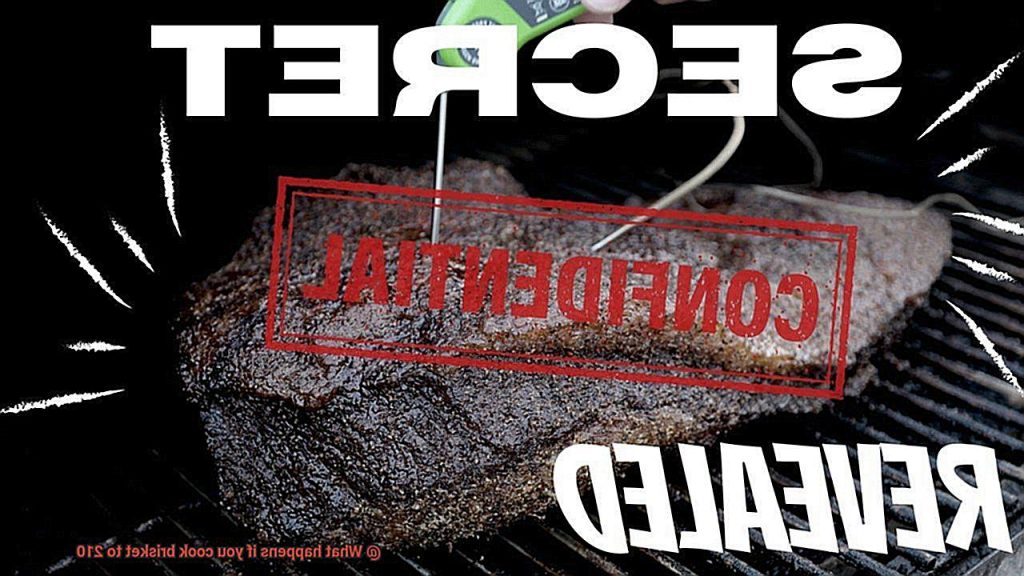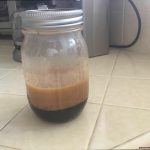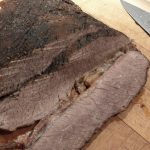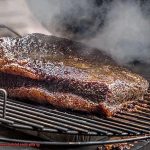Calling all barbecue enthusiasts and meat lovers. Have you ever pondered the outcome of cooking brisket to 210 degrees Fahrenheit? Brace yourself, because hitting this temperature is a critical moment in the cooking process that can either make or break your brisket.
Brisket, a tough cut of beef, demands low and slow cooking to break down the connective tissue and render the fat. The perfect internal temperature for a tender, juicy brisket has always been a hotly debated topic amongst pitmasters. While many swear by the classic method of cooking to 190-195°F, others argue that taking the temperature to 210°F is the key to achieving ultimate brisket perfection.
But what exactly happens when you cook brisket to 210°F? Does it turn into a dry, overcooked mess or transform into melt-in-your-mouth perfection? In this post, we will delve into the science behind brisket cooking, including the Maillard reaction and collagen breakdown. Additionally, we will discuss potential pros and cons of cooking brisket to such a high temperature while providing tips on how to achieve ideal doneness.
So whether you’re an experienced smoker or a curious amateur, join us as we unravel the mystery of what happens when you cook brisket to 210°F – and discover secrets for creating mouth-watering, tender brisket that will leave everyone craving more.
Contents
What is Brisket?
As an expert on this topic, let me be your guide to everything you need to know about brisket.
At its core, brisket is a tough and fibrous muscle that comes from the lower chest of a cow. To make it tender and juicy, it requires slow cooking that breaks down the connective tissues. There are two main types of brisket – the leaner flat cut with less fat marbling, and the more flavorful and tender point cut with more fat and connective tissue.
But cooking brisket isn’t just about reaching the perfect internal temperature. It’s also about creating that irresistible bark on the exterior of the meat. The bark is a delicious combination of spices, smoke, and caramelized meat juices that create a flavorful crust on the meat.
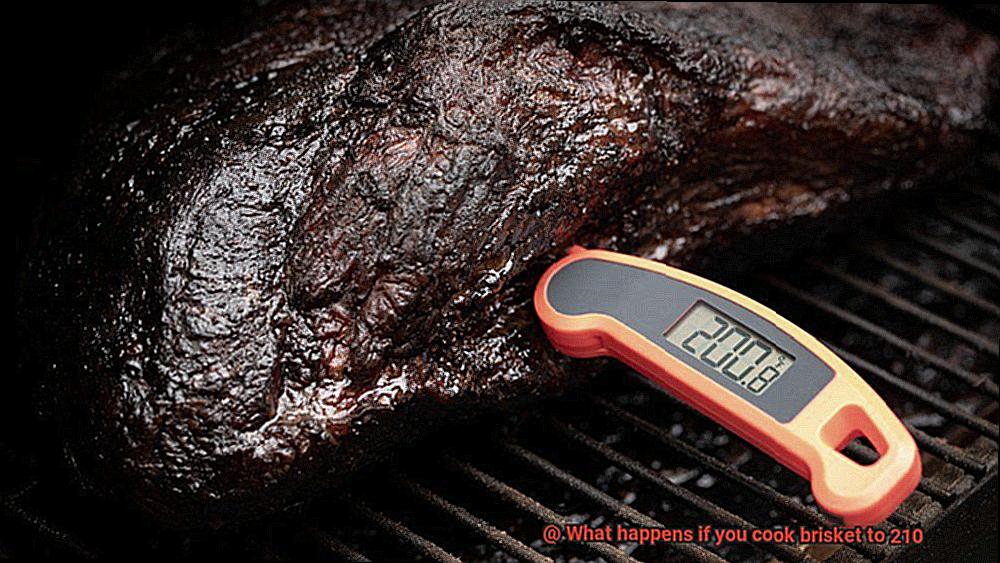
To achieve the perfect brisket, you’ll need patience and skill. Slow cooking or smoking your brisket for several hours will give it that melt-in-your-mouth tenderness and rich flavor profile. However, there is a risk of overcooking if it reaches 210°F too quickly or is left at that temperature for too long. That’s why it’s crucial to monitor the internal temperature of your brisket throughout the cooking process and remove it from heat once it hits 210°F.
Brisket can be used in various cuisines around the world, making it a versatile ingredient in any kitchen. Whether you’re serving it as a standalone dish or using it in sandwiches or tacos, a perfectly cooked brisket is sure to impress your guests.
The Benefits of Cooking Brisket to 210°F
First and foremost, this temperature is the ultimate sweet spot for achieving tender and flavorful meat. When cooked low and slow to 210°F, the connective tissues in the meat break down and become tender, resulting in a succulent and easy-to-chew texture. The collagen responsible for the chewy texture of brisket melts into gelatin, delivering an explosion of flavor with each bite.
Cooking brisket to 210°F also ensures that the fat is properly rendered, resulting in juicy and moist meat. The high temperature helps to break down fat cells and release their flavor, infusing the meat with a rich and savory taste that will make your taste buds dance with delight.
And let’s not forget about the bark. Cooking brisket to 210°F helps develop a mouth-watering crust on the surface of the meat. The high temperature causes a Maillard reaction, creating a browned and crispy exterior that adds depth and complexity to the flavor profile.
What Happens to the Meat at 210°F?
When the brisket hits 210°F, it enters what we call the “stall.” This plateau can last for hours, and it’s natural for many cooks to get frustrated when the temperature refuses to rise steadily. However, it’s vital to remember that the stall is an essential and natural part of the cooking process and should not be rushed.
So, what’s happening during the stall? The meat undergoes evaporative cooling. As surface moisture evaporates, it cools the surface of the meat and slows down its cooking process. It can be frustrating if you’re cooking on a tight schedule or have hungry guests waiting for their meal. Nevertheless, patience is key – trying to speed up the cooking process by raising the temperature or wrapping the meat too early can result in tough and dry meat.
At 210°F, the meat is still cooking and breaking down connective tissue. However, it hasn’t reached its final stage of tenderness yet. The brisket will continue to cook and soften until it reaches an internal temperature of around 195-205°F. This is where the magic happens – connective tissues melt like butter, fat renders perfectly, and bark develops a mouth-watering crust that will make you drool.
But how do you know when your brisket has reached this magical temperature range? Simple – use a meat thermometer. This crucial tool ensures that your brisket turns out tender and juicy every time.
Risks of Overcooking Brisket
If so, you know how important it is to get the cooking process just right. But did you know that overcooking brisket can be just as bad as undercooking it? In fact, there are several risks associated with overcooking brisket that can have a significant impact on the taste and texture of the meat.
Firstly, overcooking brisket can make the meat tough and dry. While it’s true that brisket is a tough cut of meat, proper cooking can make it tender and juicy. However, overcooking it can cause the connective tissues in the meat to break down too much, resulting in a dry and tough piece of meat that’s difficult to chew and enjoy.
Another risk of overcooking brisket is losing its flavor. Brisket has a rich, beefy flavor that comes from its fat content and cooking method. When overcooked, the fat renders out too much, leaving the meat dry and tasteless. Moreover, cooking at high temperatures can cause the smoky flavor to disappear as well, leading to an unappetizing meal.
Overcooking brisket also leads to a loss of nutrients. When meat is overcooked, some vitamins and minerals are lost due to protein breakdown. Overcooking your brisket means missing out on important nutrients that your body needs for optimal health.
Finally, overcooking brisket can be a waste of time and money. It’s an expensive cut of meat, and overcooking it means ending up with a tough and dry piece that nobody wants to eat. This can lead to frustration and disappointment, especially if you were looking forward to enjoying a delicious meal with friends or family.
Serving Suggestions for Brisket Cooked to 210°F
Before you dig in, remember to trim any excess fat. This will ensure that your meat isn’t weighed down by greasy leftovers. Now let’s explore some mouth-watering options.
First up, classic sandwiches. Thinly slice the brisket and pile it high on your favorite bread. Add a dollop of barbecue sauce or go for a simpler taste. Elevate your sandwich game by throwing in some coleslaw or pickles for added crunch and flavor.
Hosting a summer barbecue or potluck? Serve your brisket alongside traditional sides such as baked beans, cornbread, and potato salad. Your guests will be coming back for seconds and thirds.
Feeling adventurous? Chopped brisket can be used as a filling for tacos or burritos. The combination of tender meat and savory spices is sure to satisfy your taste buds. You can also add the chopped brisket to a stir-fry with veggies and rice for a fusion twist.
Last but not least, pizza lovers unite. Shred your brisket and use it as a topping on your favorite pizza. Trust me, it’s a game-changer.
8Er9Hdnd50Q” >
Conclusion
In conclusion, cooking brisket to 210°F is a crucial step that separates the pros from the amateurs. It’s a delicate balance that can either produce mouth-watering meat or leave you with a dry and tough disappointment.
To achieve brisket perfection, it takes time, patience, and skill. Monitoring the internal temperature with a meat thermometer throughout the cooking process is essential. Slow cooking or smoking your brisket for several hours will give it tender, juicy goodness and a rich flavor profile that will make your taste buds dance.
Once your brisket hits 210°F, it enters what we call “the stall,” where evaporative cooling slows down its cooking process. Don’t panic; this is normal. Many cooks get frustrated when the temperature refuses to rise steadily, but patience is key here.
When serving your perfectly cooked brisket, consider classic sandwiches or traditional sides such as baked beans and potato salad. For those feeling more adventurous, try using chopped brisket as a filling for tacos or burritos or as a topping on your favorite pizza.
Whether you’re an experienced smoker or curious amateur, mastering the art of cooking brisket to 210°F is sure to impress your guests and leave them craving more.

